A Platform for
Modern
WordPress Developers
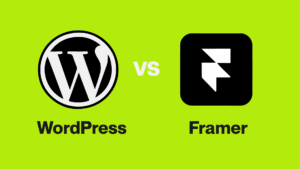
Framer vs WordPress: Can WordPress Match Framer’s Design Quality and Performace?
Introduction:
You have just landed on the detailed comparison that clears the confusion between two widely used platforms: Framer vs WordPress.
So, here’s the real question on which our discussion will be based:
“Can WordPress in 2025 actually match Framer’s polished design quality and Performance, or is Framer really the WordPress killer as it claims to be?”
In this guide, we will elaborate on:
- How Framer and WordPress are positioned today
- Their strengths and weaknesses in design quality, Performance, customization, SEO, and cost
- The real-world use cases where each tool shines
- Expert tips to help you decide when to use one or even both together
By the end, you will not only know whether WordPress can match Framer’s design and performance in 2025 or not.
But you will also know which platform is right for your next project.
Let’s Get Started…
Understanding the Platforms: Framer vs WordPress at Their Core
Before we dive into comparisons, it is important to understand what each platform really is and for what purpose it was built for.
Think of this as getting to know two very different personalities before deciding who you would rather work with.
What is Framer? An Overview
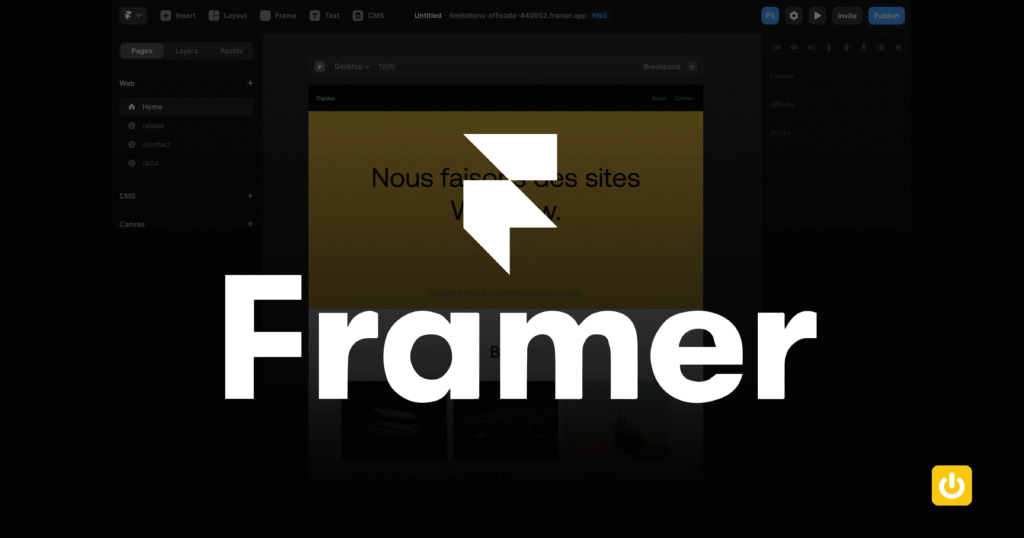
Framer did not actually start as a website builder, but it began life as a prototyping tool for designers.
Its goal was to help creatives turn their Figma or Sketch designs into interactive prototypes. Over time, however, Framer made a bold leap into the website-building world.
Unlike traditional platforms, Framer positions itself as “design-first, code-optional.” That means you do not need to worry about lines of code to get a polished and pixel-perfect website.
Its audience is clear around designers, startups, and creative professionals who want visually stunning websites without the headaches of development.
Framer’s biggest strengths are its sleek templates, smooth animations, and pixel-perfect control, making it a favorite for portfolios, landing pages, and modern startups that prioritize design aesthetics above all else.
What is WordPress? An Overview
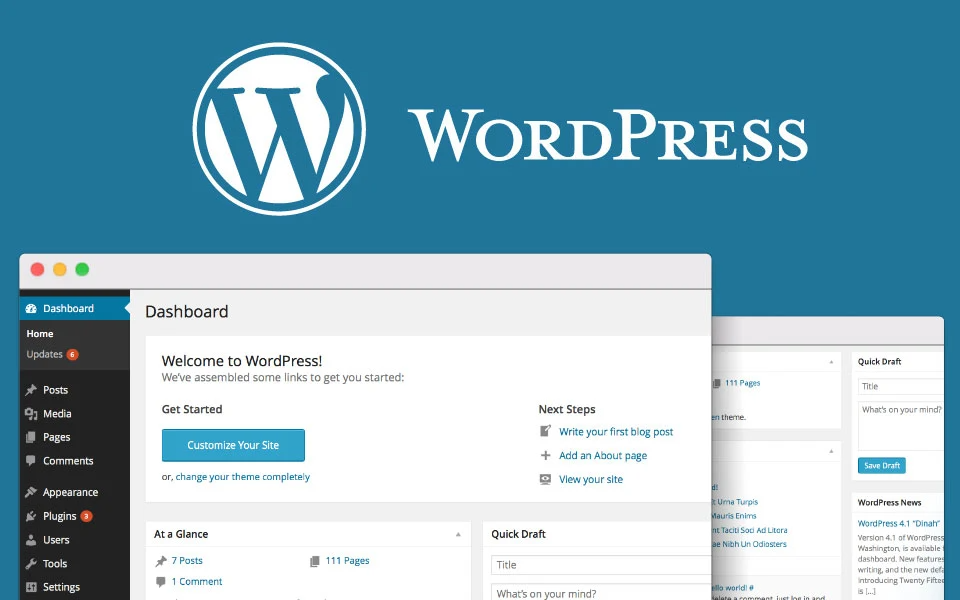
On the other hand, WordPress has a completely different story.
Launched in 2003 as a simple blogging tool, it has grown into the world’s most powerful content management system (CMS), powering everything from personal blogs to enterprise-level websites.
Its audience is incredibly broad, from businesses, creators, developers, agencies, and even large enterprises that rely on it daily.
The real power of WordPress lies in its flexibility, scalability, and ownership.
Unlike Framer’s closed ecosystem, WordPress is open-source, meaning you can shape it into almost anything, like blogs, online stores, news platforms, or full-fledged applications.
And with the modern shift of Gutenberg block editor, block themes, and modern tools like Elementor, Bricks, or Kadence with AI Integration, WordPress has bridged much of the design gap that once separated it from designer-focused platforms like Framer.
Comparison of Design Quality Between Framer & WordPress
When people ask whether Framer can beat WordPress, what they are really asking about is design quality.
Can the websites built on these platforms look equally polished, professional, and modern? Let’s break it down.
Design Detail & Accuracy
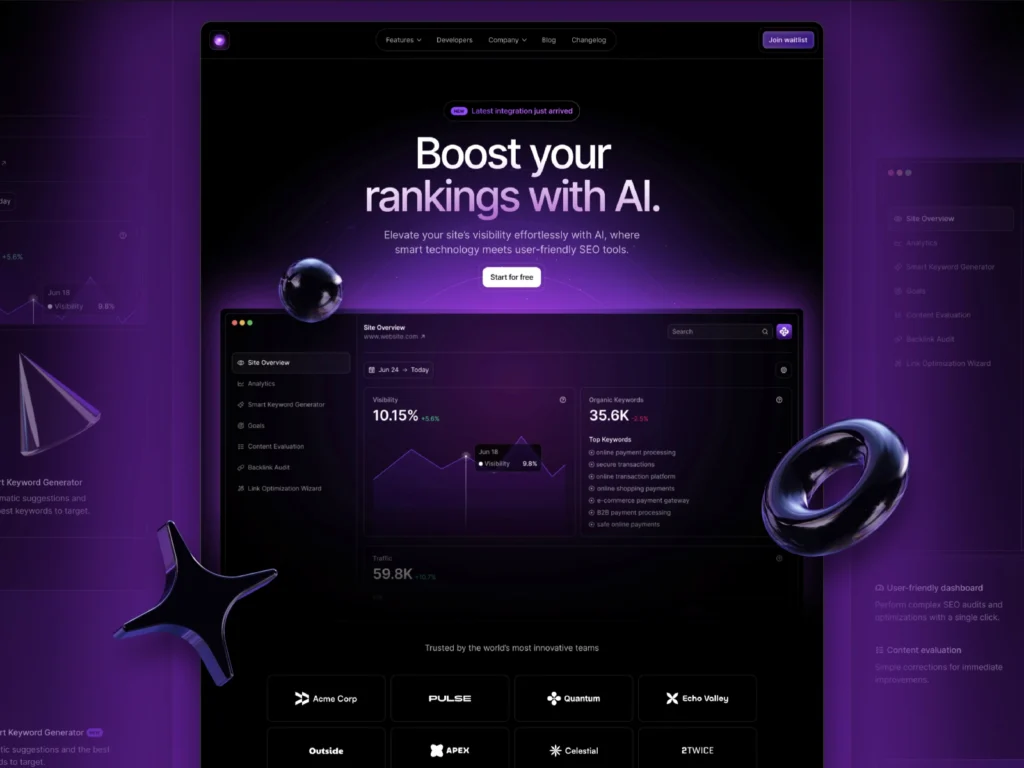
Framer’s reputation comes from its ability to deliver pixel-perfect designs. What you see on the canvas is almost exactly what you get live on the web.
This “design-to-web” workflow is why many creatives rave about it. It feels like designing in Figma, but the result is a functioning site.
Framer shines for high-end visuals, smooth animations, and sites that simply “wow” at first glance.
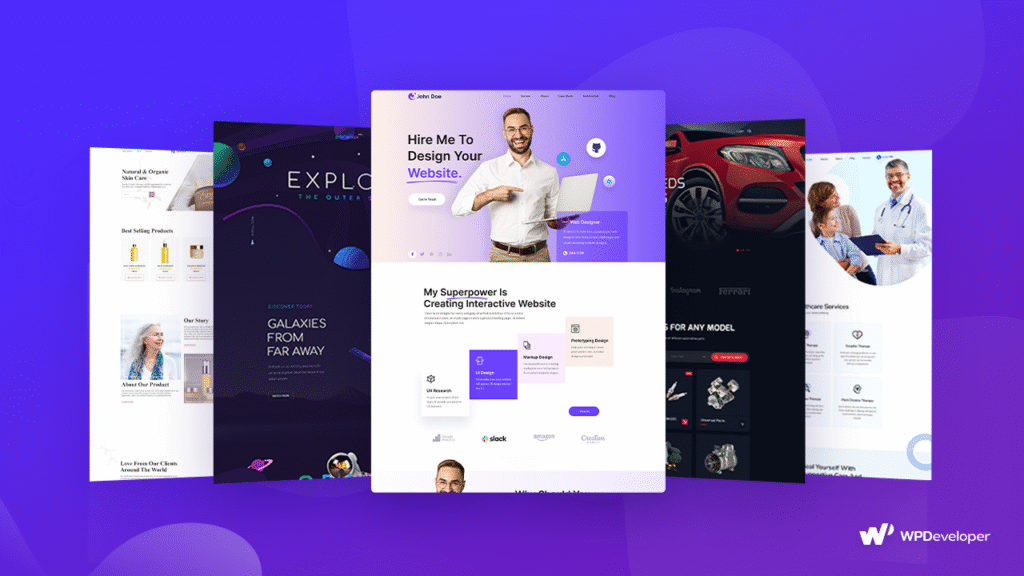
WordPress, on the other hand, has been catching up fast.
The introduction of modern page builders like Elementor, Divi, Bricks, and Kadence with AI integrations allows WordPress sites to look just as refined.
Many modern WordPress design libraries even rival Framer templates in aesthetics.
If you have only seen outdated WordPress themes, you would be surprised by how futuristic and aesthetic WordPress designs look in 2025 with these modern tools.
Ease of Use
For beginners, Framer feels effortless. Its drag-and-drop simplicity allows anyone to spin up a stunning site in hours.
But the trade-off is flexibility. Beyond visual design, Framer can feel restrictive, especially if you want complex features.
WordPress has a steeper learning curve, but once you push past the basics, you will find long-term flexibility that Framer simply can’t match.
It’s like learning to drive a manual car in which you put in a bit more effort up front, but later you can go anywhere.
Customization Freedom
Here’s the biggest difference: Framer operates within a closed ecosystem, meaning your creativity is still boxed in by the platform’s limits.
WordPress, being open-source, has no ceiling. With 60k+ plugins, custom themes, and full coding freedom, it scales from personal blogs to enterprise apps.
In short, Designers may prefer Framer’s simplicity, but developers and anyone thinking long-term will lean towards WordPress’s freedom.
New Features in WordPress in 2025
If you last used WordPress five years ago, you would barely recognize it today.
The platform has undergone a massive transformation, making it look and feel less like an “old CMS” and more like a modern design tool that can hold its worth against Framer.
Let’s look at what’s new.
Gutenberg Block Editor, Block Themes & Full Site Editing
Once seen as a clunky experiment, Gutenberg has matured into a robust block system that rivals visual design platforms.
With global styles, advanced typography, and reusable patterns, WordPress sites now achieve consistent, professional design with minimal effort.
Modern block themes like Ollie and Frost are stunning right out of the box. And thanks to Full Site Editing (FSE), you can control your entire site, including header, footer, and templates, without needing an extra builder.
For many users, this means the design gap with Framer is shrinking fast.
Native Patterns & Design Libraries
The WordPress.org pattern directory has become a goldmine for plug-and-play designs in the Gutenberg editor.
Whether you need a pricing section, a hero layout, or a portfolio grid, you can drop in pre-built patterns instantly.
Agencies are even releasing complete design systems for WordPress, giving small teams access to professional-grade design with minimal effort.
Third-Party Page Builders with AI Integration
While Gutenberg is powerful, the WordPress ecosystem thrives on choice.
Builders like Bricks, Elementor, Divi, Kadence, and Oxygen bring advanced templates, drag-and-drop simplicity, and now even AI-assisted design features.
These tools make creating beautiful websites faster while giving designers and developers more creative freedom.
Every update narrows Framer’s visual edge.
Modern Themes That Compete with Framer
Today’s WordPress themes aren’t just functional, but they are also beautiful.
Many come with ready-to-launch templates, deep customization options, and the flexibility to work seamlessly across multiple builders.
This allows creators to mix and match tools depending on their workflow, something Framer’s closed system can’t offer.
In 2025, WordPress is not just catching up; it is reshaping the web design game entirely.
Performance & SEO: Speed Meets Search Visibility
A website is not just about looking good, but it also needs to load fast and rank well on search engines.
Let’s see how Framer and WordPress stack up in 2025.
Framer’s Performance
Framer sites are known for being visually smooth and fast-loading because they run on Framer’s own hosting and CDN.
For simple portfolios or landing pages, this is usually more than enough.
However, speed is not the full story. When it comes to technical SEO, schema markup, or custom optimizations, Framer is limited.
You get only the basics, which can hold back businesses aiming to rank in competitive niches.
WordPress Performance in 2025
WordPress used to have a reputation for being “heavy,” especially when overloaded with old-school page builders.
But in 2025, block themes and lightweight page builders have changed the game. They produce cleaner code, which makes sites faster out of the box.
On top of that, WordPress supports caching plugins, image optimization tools, and Core Web Vitals improvements, giving you much control over performance.
Unlike Framer, you can fine-tune hosting and server-level optimizations, scaling speed to match the project’s needs.
SEO Control
Here’s where the difference becomes crystal clear. Framer offers basic SEO tools like meta titles and descriptions, but not much more.
WordPress, by contrast, gives full control. With plugins like Yoast SEO or Rank Math, you can manage metadata, XML sitemaps, schema markup, canonical tags, breadcrumbs, and even AI-assisted optimization.
This means WordPress is not just faster to optimize, but it is smarter and more scalable for serious SEO campaigns.
In short, Framer delivers simplicity, but WordPress delivers speed with full SEO power.
Cost & Ownership: What You Pay and What You Own
When choosing a platform, design is exciting, but budget and ownership often make the final decision.
Let’s break down how Framer and WordPress compare in terms of cost and control.
Framer Pricing
Framer uses a subscription-based model where hosting and the platform come bundled together.
This makes pricing simple to understand at first, but it comes with limits.
Personal sites may seem affordable, yet costs scale quickly for teams, agencies, or businesses that need multiple projects, advanced features, or more editors.
It’s a classic SaaS setup, which is convenient but recurring, and your site always lives inside Framer’s ecosystem.
WordPress Costs
WordPress flips the model.
The software itself is free and open-source, but you’ll need to pay for hosting, which can be as cheap as a few dollars a month or as premium as enterprise-grade managed hosting.
Themes and plugins vary in pricing, as many are free, while premium ones are often one-time or freemium purchases.
Over time, this flexibility usually makes WordPress more cost-effective, especially for growing businesses that want full control without rising subscription fees.
Ownership & Portability
Perhaps the most overlooked difference is ownership.
With Framer, your site is locked into their platform. You cannot download it or move it elsewhere, and if you stop paying, your site is gone.
WordPress, in contrast, gives you full ownership. You can host it anywhere, migrate between providers, or even keep backups offline.
This portability is why enterprises and agencies continue to trust WordPress for mission-critical projects.
Framer offers simplicity with a recurring bill, while WordPress offers flexibility, long-term savings, and true ownership.
Ecosystem & Community: The Power Behind WordPress & Framer
A platform’s ecosystem is often what determines its long-term value.
It’s not just about what the tool offers today, but it’s about the resources, community, and extensions that keep it growing.
Framer’s Ecosystem
Framer has a template marketplace that makes it easy to launch beautiful sites quickly. However, its ecosystem is still relatively small and closed.
Unlike open-source platforms, there’s limited room for third-party developers to expand its capabilities.
The community exists, but its niche revolves around designers and startups.
So, the pool of shared knowledge, tutorials, or plugins is limited compared to older, more established platforms.
WordPress’s Ecosystem
WordPress, on the other hand, thrives because of its massive open-source ecosystem.
With over 60,000 free plugins and thousands of themes, almost anything you imagine can be built.
The global WordPress community is unmatched, with meetups, WordCamps, and forums where beginners and experts connect.
Beyond that, entire agencies and developer networks specialize in creating custom WordPress solutions at any scale, from small blogs to enterprise platforms.
This ecosystem ensures WordPress continues evolving, no matter how the web changes.
In short, Framer is sleek but limited, while WordPress has a powerhouse ecosystem that supports growth, collaboration, and innovation worldwide.
Real-World Use Cases: Choosing the Right Tool for the Job
One of the easiest ways to decide between Framer and WordPress is to look at real-world scenarios.
Each platform shines in different contexts, depending on the goals of the project.
Where Framer Wins
Framer is at its best when speed and design flair matter more than long-term flexibility.
If you are a designer showcasing a portfolio, a startup launching a sleek landing page, or a small team that needs a polished site fast, Framer will deliver it to you.
Its templates and animations allow you to go from concept to live site in hours.
The trade-off is that scaling the site later, like adding a blog, ecommerce, or custom features, can feel restrictive.
Where WordPress Wins
WordPress excels in situations where scalability, functionality, and SEO are critical.
For business websites, online stores with WooCommerce, blogs, or news portals, WordPress offers unmatched control.
It’s also ideal for SEO-heavy industries like real estate, finance, or health, where ranking in search engines is non-negotiable.
Because it’s open-source, WordPress adapts to virtually any use case, from small personal blogs to enterprise platforms with millions of visitors.
Case Examples
Imagine a designer portfolio that Framer makes it quickly and stunning, but a WordPress portfolio built with a modern theme and builder could also match that design while also adding SEO-friendly blogging and client booking features.
Similarly, a startup landing page may look gorgeous on Framer, but WordPress offers landing page templates that look just as sleek while also allowing you to expand into a full website when the startup grows.
So, Framer is great for instant design wins. But WordPress is built for the long game.
Common Mistakes When Comparing Framer and WordPress
When people debate Framer vs WordPress, many comparisons miss the bigger picture.
Let’s clear up the most common mistakes.
Assuming WordPress is Only a Blogging Tool
The first mistake is assuming WordPress is still just a “blogging tool.”
While it began that way, it has evolved into a full content management system and modern site builder.
Dismissing it as “old-school” ignores the incredible progress made with Gutenberg, block themes, and modern AI-assisted page builders.
Ignoring Modern Gutenberg and Block Themes
Another mistake is ignoring Gutenberg entirely.
Many people have only experienced WordPress through outdated themes or heavy page builders.
But Gutenberg and modern block-based themes have transformed how WordPress looks and feels, which brings it much closer to the sleek design-first approach of platforms like Framer.
Thinking They are the Same
It’s also misleading to directly compare Framer (a hosted SaaS tool) with WordPress (a self-hosted CMS).
Framer controls everything, including hosting, features, updates, while WordPress gives you freedom to choose your host, plugins, and setup.
They are not playing the same game.
Overlooking the Importance of SEO & Ownership
Finally, many overlook the importance of SEO and ownership. Framer offers convenience but keeps you locked into its ecosystem.
WordPress, meanwhile, gives you full control over optimization and the freedom to move your site anywhere.
The takeaway is that to compare them fairly, you need to see the whole picture, not just surface-level design.
Expert Tips: Getting the Best of Both Worlds
You don’t always have to see Framer and WordPress as competitors, but sometimes the smartest move is knowing when to use each.
Choose Framer if design speed and visual impact are your top priorities.
It’s perfect for quick-turnaround landing pages, portfolios, or concept sites where aesthetics matter more than scalability.
Go with WordPress if you need scalability, SEO strength, or advanced functionality.
From e-commerce to content-heavy platforms, WordPress ensures long-term growth without hitting limits.
A powerful hybrid workflow many professionals use is to prototype in Framer or Figma, then translate the polished design into a flexible WordPress build.
This gives clients the “wow” factor of Framer’s visuals with the scalability and SEO control of WordPress.
For agencies and freelancers, the best approach is to keep both in your toolkit.
That way, you are ready to recommend the right platform based on the client’s needs, but not on personal preference.
Conclusion: Can WordPress Match Framer’s Design Quality in 2025?
The short answer is yes.
WordPress can match Framer’s design quality in 2025, but it often requires a bit more effort and the right setup.
With modern block themes, powerful and AI-assisted page builders, and a thriving ecosystem of design tools, WordPress has evolved far beyond its “blogging CMS” reputation.
Today, it’s capable of delivering sleek, design-driven websites that rival Framer’s output.
Rightly said, the best choice depends on your goals.
Framer shines for portfolios, startup landing pages, and small teams who prioritize speed and aesthetics.
WordPress, on the other hand, dominates when it comes to scalability, SEO, ecommerce, and content-heavy websites, making it the long-term winner for businesses and publishers.
If you are curious, try building a site with a modern WordPress block theme or page builder and see the difference yourself.
👉 Want more platform comparisons, practical guides, and insider tips? Subscribe to our newsletter and stay ahead with expert insights delivered straight to your inbox.